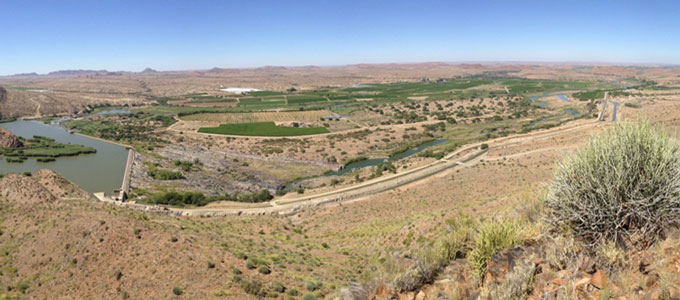Saving lives and protecting assets by reducing arc flash hazards
An arc flash is one of the greatest dangers electrical workers face, with potentially tragic consequences.
Each year, workers worldwide are killed or injured by arc flash – a type of electrical explosion (like a short circuit through the air) that can produce a deadly force equivalent to detonating a bomb.
As many as 10 arc flash incidents occur every day in the USA. In Australia, two electrical workers were killed in 2015 when an arc flash occurred in the power supply to a shopping centre. In mid-2015, another two Australian mining workers were seriously injured by an arc flash underground.
Being injured by an arc flash is, thankfully, not much more common in the developed world than being hit by lightning, but the injuries can be similar. Arc flash accidents can cause burns (often very severe, and most commonly to hands and face), injuries to the airways from toxic gases, damage to the eyes and ears from intense light and sound, and impacts from being thrown or being hit by flying objects or shrapnel.
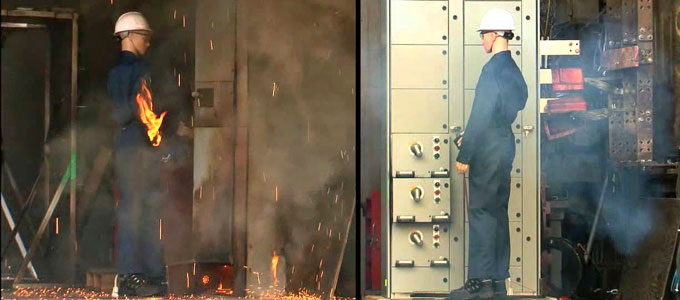
As well as the serious risks of injury or death that an arc flash hazard poses to the safety of workers and the public, it can also cause substantial physical damage to equipment and infrastructure, and prolonged outages or restricted power supply. And these impacts all add up to sizeable costs.
Including arc flash in the overall risk management strategy
To protect against the costly consequences of arc flash hazards, any owner or operator of electrical assets needs to incorporate the potential for arc flash events in their overall risk management strategy.
Wherever electricity supply is required, faults and arc flashes can occur, potentially at any time. This means that arc flash can never be completely eliminated in electrical transmission and distribution substations. However, there are known scenarios of greater risk, including times when the electrical system is under stress due to surges or faults; during maintenance; during switching or racking of the circuit breaker from the switchboard compartment; when asset condition is in decline; or when working with older types of switchgear, which typically have no arc fault containment features.
Calculating the level of risk
To understand the arc flash risk for a substation, calculations are performed to estimate the potential energy of an arc flash incident and to estimate the arc flash boundary (the distance from a live part from which a person could receive a second-degree burn). Fault clearing times are also calculated, as the time it takes to clear the fault is directly related to the energy of an arc flash. The fault clearing time depends on various factors such as the type of protection in place and the location of the fault, so a detailed analysis is required for individual sites to determine the arcing time.
Calculations are usually based on two North American standards, IEEE 1584 and NFPA 70E. Although neither of these standards applies fully to Australian workplaces, the combination of these two standards has become the de-facto local standard as no Australian standard currently exists. This lack of clear guidance means that every owner or operator of electrical assets needs to be confident that they are making the right risk management decisions by understanding current industry best practice.
Once these calculations have been made, the risk level of individual assets can be determined based on the likelihood of an arc flash (derived from factors such as asset condition and exposure of workers) and its consequence (derived from worker safety, equipment damage and loss of supply).
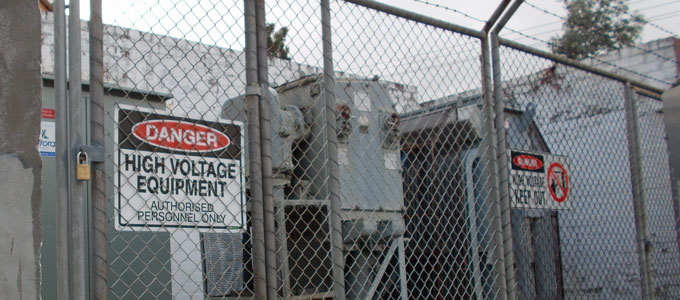
Lowering arc flash risk without breaking the bank
Our ultimate preference is to prevent an arc flash from occurring at all, but the inherent risks in an electrical asset may make full eradication difficult. Where the risk of arc flash is high, a combination of appropriate controls should be used to lower the risk to a more acceptable level.
Although personal protective equipment (such as an arc flash suit, or a face mask and gloves) is a necessary and relatively easy protective measure to implement, PPE will not protect a worker from impact-related injuries, nor protect equipment or reduce outages, so it is important to also fully investigate some of the higher rungs of the hazard reduction hierarchy of controls.
Other cost-effective control measures to mitigate arc flash hazards include increasing employee awareness and skills, reducing employee exposure, and reducing arc flash energy.
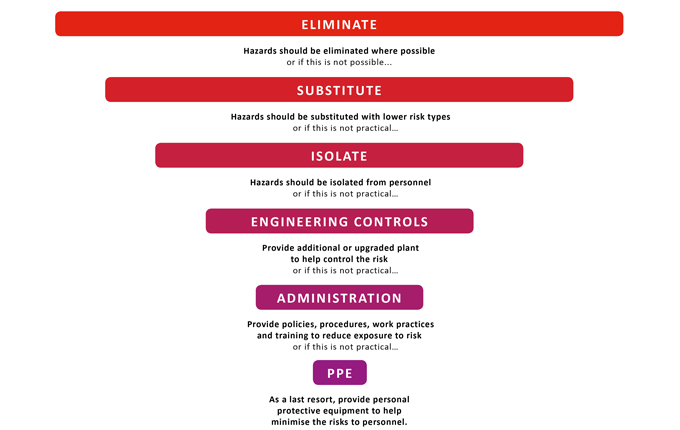
Given that arc flash incidents are most likely to occur when workers are present and are often caused by human error (such as dropped or mislaid tools or incorrect operation), it is important to make employees aware of the hazards and maintain employee skills through training and competence assessments.
Another easy way to improve worker safety is by limiting the exposure of workers by undertaking switching and racking remotely with no personnel near the switchgear.
A very effective engineering control to reduce the risk is by reducing the arcing time, which reduces the energy of the arc flash. This can be achieved by installing arc flash light-detection systems combined with fast-acting earthing switches. The light detection will pick up an arc flash very quickly (in around 4 milliseconds) and, by applying a three-phase connection to earth, the arc will be extinguished.
Keeping our own workers and assets safe
As part of Hydro Tasmania, Australia’s largest producer of renewable energy, Entura has been involved since 2012 in studying arc flash hazards on an extensive portfolio of electrical equipment to better understand its consequences. As asset owners, we appreciate the need to keep our workers and assets safe through achieving the best risk mitigation for the available investment of funds. We’ve brought this together with up-to-date knowledge of industry best practice and trends to assist clients develop safe and cost-effective strategies to confidently manage the risk of arc flash throughout their electrical asset portfolios.
To discuss how Entura can work with you to fully assess and address your electrical risks for greater worker safety and reduced outages, contact Patrick Pease.
MORE THOUGHT LEADERSHIP ARTICLES
Starting safe, staying safe: building safety into electrical design
Because electricity has inherent risks with serious consequences, safety should always be a fundamental concern of consultants and clients working with power assets at all stages of the project lifecycle.
We know that the safest and best outcomes are achieved by using a ‘safety in design’ process to ‘design safety in’ from the very start. As projects progress towards implementation, remedying risks becomes increasingly costly and progressively less effective, so it’s far better to get things right early on.
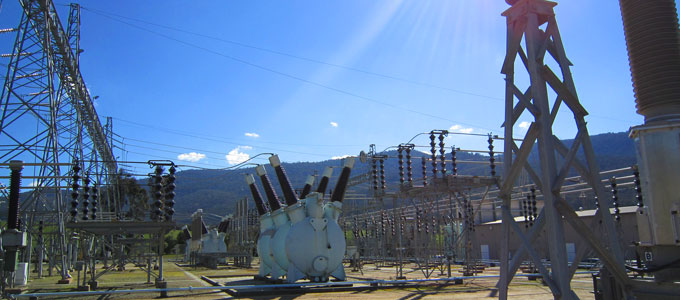
Safety applies to electrical design too
Giving greater and more systematic attention to eliminating safety hazards at the design stage emerged from the historically poor safety performance of the construction industry and is now well established.
Safety in design (SID) processes integrate hazard identification and risk assessment methods into the design of all aspects of a project to eliminate or minimise the risk of injury throughout the project or structure’s life (including decommissioning or disposal).
It is a common misconception that SID processes don’t apply to the electrical industry because we have ‘tried and true’ standardised designs that already comply with existing safe standards and systems, and are known to be safe.
While it is true that standard electrical designs are generally very safe during the operational phase of installations, the same cannot always be said about the construction, commissioning and decommissioning phases of an asset’s life.
Also, encouraging engineers to come up with innovative solutions often means modifying standardised designs. So the virtue of innovation carries the potential to create risks during the operational phase, if safety isn’t managed correctly.
A new set of skills
To effectively identify and manage safety risks during the construction, commissioning and decommissioning phases, the design engineer needs to have a new set of skills, not often included in the traditional education of a professional engineer. The engineer must understand not only how their design will function, but also understand the process of its manufacture, installation, commissioning, operation and decommissioning.
As part of Hydro Tasmania, Australia’s largest producer of renewable energy, Entura’s electrical engineers extend their skill sets and understanding of owning and operating assets by working through much of the same training as our asset managers and plant operators (including isolation, locking, tagging, low-voltage rescue and general power plant safety procedures).
Our close and long-term relationship with the extensive power assets of Hydro Tasmania also allows our specialists to spend much more time in operational power stations and switchyards than many other consultants.

More than ‘ticking the box’
At Entura, we recognise that safety in design is not static, it can’t be done at just one point in time, it can’t just involve electrical designers, and it must be more than a ‘tick the box’ exercise if it is to make meaningful improvements to people’s safety as well as comply with regulations.
That’s why we integrate safety into the design process at all stages. Because design is not a simple or linear process, multiple safety review meetings allow the safety of the design to be formally reassessed at every step and for every phase of the asset’s life, in addition to the day-to-day awareness and integration of safety into all our design decisions.
Typically, at least two SID review meetings are held: one when the conceptual design is nearing completion, and one when the detailed design is 50–80% complete. The SID meeting for a complex project could include representatives from the client, the construction team, the design team and the plant operator.
Any limitations in the designer’s knowledge of the construction, operational or decommissioning environments are compensated for by the broader knowledge available at the SID review meeting. Further stakeholders who may have additional safety insights for specific or unusual issues can also be identified.
SID review meetings give engineers in different disciplines or specialties the opportunity to communicate and explain their decisions. Where a decision made by one engineer could inadvertently create a safety impact on another discipline, this can be quickly identified and appropriately remedied.
When the concept of SID is valued by engineers and clients, and appropriately built into project processes (whether for dam safety, hydropower station safety, or electrical safety), it results in safer designs. And safer designs make safer assets and safer workers. Investing early in designing out any foreseeable safety risks will save money and time through the project lifecycle, and will protect your reputation, now and into the future.
To discuss how Entura can help you ensure the safety of your electrical assets, contact David Wilkey on +61 407 875 391 or Patrick Pease.
About the author
David Wilkey is a specialist electrical engineer at Entura. David has 20 years of experience in a wide range of electrical engineering projects including power system studies, power system and generator protection, generator connection rules, and primary plant electrical engineering. David’s primary interests include all aspects of electrical engineering for hydropower projects, such as hydro turbine governors, generator excitation and generator protection systems.
MORE THOUGHT LEADERSHIP ARTICLES
Smart communities: a win–win for all grid players?
As the electricity sector is revolutionised by new distributed generation and storage, can all the players survive? Is it possible for everyone to win?
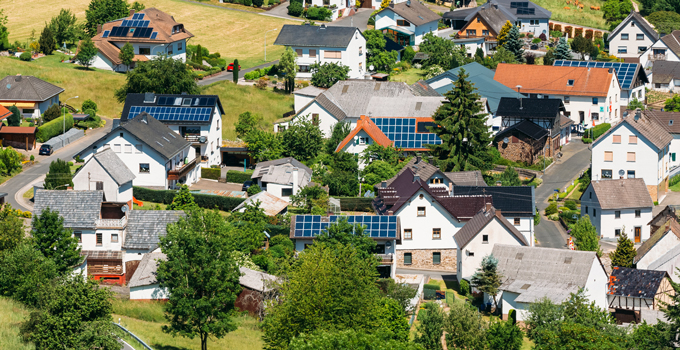
The possibility of the death spiral of the grid and how it can survive the challenges of distributed generation and storage have previously been discussed by my Entura’s Donald Vaughan.
We believe that a grid, in a slightly different shape and form, is essential for the future of the electricity industry . And, if we get it right, this should be good news not only for electricity utilities, generators and retailers, but also for consumers and their communities.
The energy revolution
The electricity sector is on the threshold of a new era. In the same way that the introduction of digital cameras and mobile phones turned photography and telephony inside out and upside down, the electricity industry is being shaken up by a major new paradigm in which local generation, storage and bi-directional power flows in the network are blurring the boundaries between the key, discrete players in the traditional grid.
The traditional players – generators, transmission and distribution providers, retailers and consumers – are giving way to hybrid concepts such as ‘gentailers’ and ‘prosumers’. And new ‘smart’ technologies are giving consumers greater control over their timing and level of power demand.
At the same time, the grid is still required to be able to provide all the energy needed to support maximum demand, and that’s expensive. It’s like buying four cars for a family of four, just because once a year they might all be needed at the same time.
But, if consumers leave the grid, they will find it expensive to install enough solar panels and batteries to meet their own maximum demand and cover periods of cloudy, cold weather. They’ll be footing the bill for their own ‘four cars’, with no way to share the costs.
Moving towards a shared energy vision
A workable, clean and affordable solution that benefits consumers but also helps the grid escape the death spiral may be to produce renewable energy locally, but in a controlled fashion, complementing grid operation. Let’s call this a ‘smart community’.
The smart community might be a group of consumers within a geographical area such as a suburb, who, while still connected to the main grid, generate and store a proportion of their own power through distributed renewable generation, and use smart technologies to manage their devices and control their power usage to get the best value from their own power infrastructure.
This community can trade energy, not just between individuals, but also among other groups of consumers, or with the main grid itself. They will utilise the grid efficiently, through demand control and embedded generation control, and even support the grid in times of need, and charge for that service.
In this scenario, the grid provides any extra power these communities may need and gives them a sharing mechanism, but the opportunity to participate in the energy market gives the smart community more ‘bang for the grid-charges buck’. Neighbours and communities can share their own locally produced and stored energy and trade it in the energy market when the price is right – increasing the amount of clean and affordable renewable energy in the power mix, helping to democratise the energy system, and keeping some of the sector’s profits within the community.
But this win for the community does not have to come at the expense of the grid. Instead, the grid still benefits through less capital works required to manage total demand, because the smart community demand is capped by smart controls. And the smart community can also operate as a ‘virtual power plant’, providing generation or back-up to the grid at times when the community’s generation is greater than its demand.
For electricity retailers, distributors and other players in the electricity sector, providing this kind of ‘smart’ service to communities interested in taking more control of their energy generation, storage and use opens up a potential new revenue stream in the changing electricity market – and it is an opportunity still up for grabs.
Can ‘smart communities’ really work?
What makes smart communities possible is a ‘smart community controller’ for rapid demand-side response and sub-second control of loads.
As part of Hydro Tasmania, Australia’s largest renewable energy generator, specialist power and water consulting firm Entura contributed to the design and development of the controller that has been used successfully in the King Island community since 2013. The super-fast demand control system helps to keep the King Island power system at high levels of renewable penetration, by subtly managing customers’ power loads.
For example, during sudden, short drops of wind power, hot water boilers across the island are turned off for less than a minute. This reduces the total load and prevents the need for a conventional generator to start up, maintaining high renewable penetration – and customers don’t even notice the difference.
And, in the reverse scenario, if there is a surplus of renewable energy, it may be possible in future to offer it to customers at lower rates rather than spilling it. This is especially valid if storage is available.
This advanced control technology is also helping other remote communities (such as the Pacific island of Yap) balance their power demands to maximise their use of locally generated renewable energy when these sources are available.
So, enabled by very clever technology, this model of a smart community really does work. And, if developed further, promises to be a win–win for all participants in the grid.
To discuss how Entura can work with you to implement the smart grid technologies that underpin successful off-grid, hybrid, remote area, or smart community developments, contact Silke Schwartz on +61 407 886 872.
MORE THOUGHT LEADERSHIP ARTICLES
How can the grid survive distributed generation and storage?
A lot of the talk about the ‘death spiral’ in the demand for electricity from the grid in Australia has centred on the distribution end of the equation and the downside or asset risk associated with ‘disruptive’ technologies such as solar PV and storage.
I’ve suggested before that talk of the death of the grid may be premature. But how can the electricity industry respond to the advent of distributed generation and storage to embrace its potential benefits?
The grid is still required in some form
Historically, we have moved from a decentralised or local model of electricity generation and consumption to a more centralised generation model through the development of large-scale synchronous machines (hydro and thermal). This was driven by efficiencies and the high energy demands, both in volume and reliability, of industry.
The reduction in cost of distributed generation and storage is changing the efficiency equation for smaller users. But distributed generation and storage is not a viable alternative for all energy users, so the grid must remain in some form.
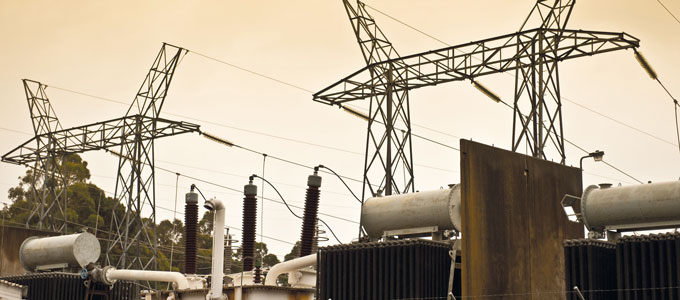
Balancing the value and cost of grid connection
All connected parties benefit to some extent from being connected to the grid. Generators get a delivery mechanism for their product. Industry gets an important input to production with high levels of reliability. Small businesses and homes get access to controllable and comparatively inexpensive energy. Customers with distributed generation and storage get access to a sink or source that can increase the value of their investment and cap their exposure to resource or equipment failure.
The network adds value to each of these transactions since without it the individual parties must all become self-sufficient. But this added value is not always perceived as adequate compensation for the cost of grid access. This distortion will ultimately lead to an over-investment in distributed generation and storage to go with an existing over-investment in the grid.
Reaping the benefits of distributed generation and storage
I think two changes could foster more efficient co-development of network infrastructure and distributed generation and storage:
- developing a real-time communication and control protocol with customer loads and storage
- re-evaluating the worth of the network, basing value not on sunk cost but on utility.
Developing a real-time communication and control protocol
To enhance the synergies between distributed generation and storage and the wider network, real-time status and control of loads and storage must be available to whoever needs it. The mechanics of this are not difficult unless response must be rapid. The sooner a standard or an accepted architecture can be adopted, the more efficient the transition and the faster the realisation of benefits.
One of the great challenges of distributed generation and storage for network operators is that it fundamentally changes the assumptions that can be made about the predictability of system demand in the minute-by-minute operation of the grid.
Linking available generation more directly to that demand alleviates some of the risk associated with the increased volatility on the demand side. It turns a looming risk into a relatively benign outcome, perhaps even a beneficial one.
For instance, if the decision to store is based on price and there is a small variation in this price setpoint across the storage fleet, then the amount of variation within one dispatch interval could be quite high, requiring larger amounts of regulation reserve to be dispatched for a larger percentage of dispatch intervals.
For large-scale renewable generators, linking to loads and storage may provide a way to increase demand to better utilise high potential yields that would otherwise be constrained in the market. The simplest example of this is a wind farm in a region where the interconnector to a larger region is at its limit. The wind farm output will be constrained even if more wind is available, unless additional demand can be found on the same side of the constraint as the wind farm.
Re-evaluating the worth of the network
Distributed generation and storage decreases some customers’ reliance on the grid. Those customers may value the grid less, but still pay the same amount to access it. And those customers are now saying this doesn’t make sense.
We know the grid does offer value. In capability terms (reliability and security), the grid is very valuable to most customers, even if they don’t appreciate it. But the grid is over-built in capacity terms for a market awash in distributed generation and storage. For many consumers, it is no longer a choice of whether to invest in distributed generation and storage, but rather a choice of what rating of inverter or storage.
Network charges cannot continue to be based purely on the sunk cost of the development and provision of the network. This worked when there was little alternative. But now that distributed generation and storage is viable for many, it is up to the network to improve its perceived value to keep its customers.
If customers’ willingness to pay is capped by a credible alternative, there is an easy choice for the rational customer with distributed generation and storage, and there is a hard choice for the electricity industry – change your pricing and enhance your product, or lose your customers. This reality is better dealt with sooner than later.
The grid of the future must be developed by considering distributed generation and storage, and comparing the relative costs of network development against distributed generation and storage developments.
It is critical that we ensure the grid is right-sized for the future. This will lead to any number of on-grid, hybrid or fully off-grid arrangements. For an efficient outcome, the flexibility and agility of grid design and operation must complement rather than duplicate the capability provided by distributed generation and storage.
It’s not the fall that kills you …
The grid has a role to play in the future delivery and consumption of electricity. But unless clear and correct signals are given to customers, the network will not follow an efficient trajectory to a new and suitable steady state, a soft landing.
A number of changes will help us create a bridge between where we are now (a grid that is increasingly unappealing to customers with distributed generation and storage) and where we need to be (a market with a seamless grid efficiently linking generators and loads). These changes centre on standardising technology and being open to adaptive network pricing and planning.
Accommodating the growing competitiveness of distribution and storage is essential to the long-term wellbeing not only of the electricity industry but also the economies it has nurtured and that sustain us all.
If you would like to find out more about how Entura can help you adapt successfully to the rapidly changing market for electricity generation and energy services, contact Donald Vaughan on +61 3 6245 4279.
About the author
Donald Vaughan is Entura’s Technical Director, Power. He has more than 25 years of experience providing advice on regulatory and technical requirements for generators, substations and transmission systems. Donald specialises in the performance of power systems. His experience with generating units, governors and excitation systems provides a helpful perspective on how the physical electrical network behaves and how it can support the transition to a high renewables environment.
MORE THOUGHT LEADERSHIP ARTICLES
ADAPT, OR DIE? SWIMMING AGAINST THE DEATH SPIRAL
Many countries are experiencing huge increases in distributed generation. Utilities are wondering whether it’s a blessing or a curse.
Electricity customers who have the funds and space to install distributed generation can reap direct benefits. Governments are variously over- or under-incentivising the growth of distributed generation, particularly solar PV on rooftops or in backyards.
There’s talk of death spirals and the weakening or undermining of the electricity supply establishment. Although I don’t buy all of the hype around the death spiral, it is real to an extent, and its implications present both opportunities and pitfalls.
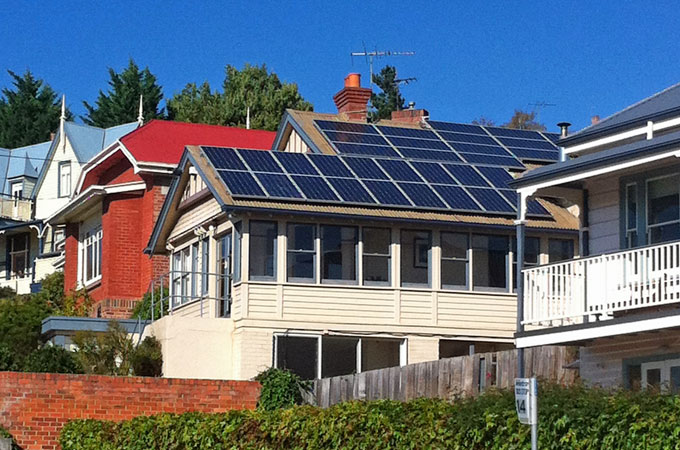
Let’s look at the death spiral …
The ‘death spiral’ is the idea that as distributed generation and storage (such as solar PV and battery technologies) become cheaper, it becomes expedient for customers to disconnect from the electricity grid. As more customers leave, the sunk cost of the grid infrastructure must be borne by fewer customers. And so, it becomes expedient for a wider set of customers to disconnect, and so on until (potentially) no customers are connected and the asset owners are left with a huge white elephant.
This hypothesis of the death spiral is sound so long as the following assumptions hold:
- all customers can afford to leave the grid
- the electricity supply industry is a monolith that can’t adapt to changing market conditions.
Can all customers afford to leave the grid?
It’s hard to imagine that people living in high-density housing could get access to enough high-yield solar surface area to be able to be energy self-sufficient. This is especially true in less sunny climates with long periods of time in which proper access to sunshine cannot be guaranteed.
Additionally, can we imagine a time when the owners of rental properties install solar PV and batteries to attract tenants, especially at the low end of the rental market?
What about the high-volume users who supported or provided the impetus for the development of the centralised generation model in the first place? While they can choose to relocate to other regions for more competitive electricity tariffs, it is unlikely that they can go off-grid to any large extent.
Is the electricity industry really incapable of adapting?
Time will tell. This is complicated by government regulation and conflicts of interest or conflicting policies. Just as it is easy to accept that an economic imperative will drive off-gridding, isn’t the converse true? Off-gridding creates an economic imperative for the electricity supply industry to adapt. So that should convert the death spiral to some sort of controllable glide path for most.
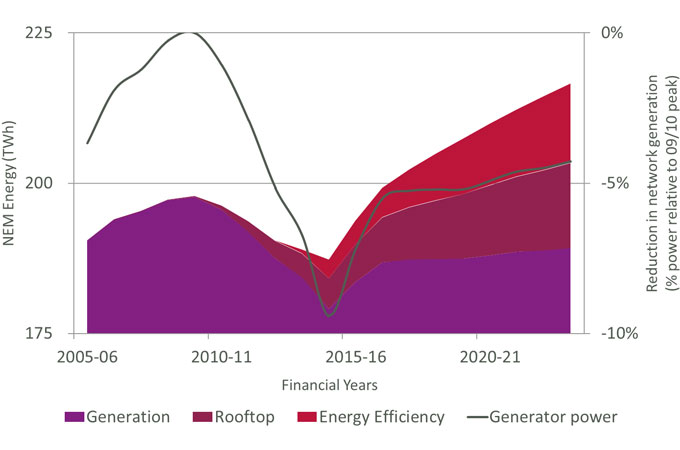
What’s happening with load growth?
We can see that neither of the assumptions supporting the death spiral are as true as the doomsayers would have us believe.
But there’s another issue we must consider: load growth. Australia is in a period of flat or negative load growth at the moment, perhaps due to the decline in manufacturing, the increased adoption of energy efficient appliances and other responses of consumers to price signals such as reducing use.
Manufacturing can only decline so far. Unless our demand for electricity can sustainably decline as well, energy efficiency can only decrease demand so much. If we imagine that our population will continue to grow, it is reasonable to assume that eventually demand will trend upwards again.
Can we imagine a future with no electricity grid?
We can and have removed the need for fixed-line telecommunications, but energy is a trickier beast.
While we still have large industrial power users remote from generation sources, and until all customers are able to generate and store according to their own requirements, some need for a power grid remains.
The grid of the future may not look like the one we have now. It may not be as reliable as the one we have now. The convenience and efficiency of sharing the cost for reliable reticulated power, however, is the one thing that the grid provides that distributed generation and storage may not.
What does this mean for the electricity industry now?
It means that we need to develop the ability to adapt.
This adaptation cannot be a purely defensive approach that tries to entrench the status quo. We must turn the challenges that confront us into opportunities to do business better.
Some concrete examples of successful adaptation could include:
- using distributed generation and storage to reduce network extension costs to new loads
- using our knowledge to inform regulators and governments of the implications of existing or proposed policies
- strategising about what enabling technologies could mean to our existing market offerings
- staying relevant by adopting and embedding these technologies to add value to our customers’ lives or businesses.
Adapting in practice
Specialist power and water consulting firm Entura has already demonstrated its innovative approach to some of these issues through the King Island Renewable Energy Integration Project and other small grid and off-grid projects. This work has given us practical experience of many developing technologies such as dynamic battery charging control, distributed or device-level demand-side management.
As part of Hydro Tasmania, Australia’s largest producer of renewable energy, we’ve also directly experienced how renewable generation can maximise benefits.
In my next article, I will explore the network benefits that may be realised from working with, rather than against, embedded and distributed generation. Subscribe to our newsletter to receive my next article.
If you would like to find out more about how Entura can help you swim against the death spiral and adapt successfully to the rapidly changing market for electricity generation and energy services, contact Donald Vaughan on +61 3 6245 4279.
About the author
Donald Vaughan is Entura’s Technical Director, Power. He has more than 25 years of experience providing advice on regulatory and technical requirements for generators, substations and transmission systems. Donald specialises in the performance of power systems. His experience with generating units, governors and excitation systems provides a helpful perspective on how the physical electrical network behaves and how it can support the transition to a high renewables environment.
MORE THOUGHT LEADERSHIP ARTICLES
Reliable, renewable energy now powering South Africa
In many developing nations, governments and utilities are scrambling to bring much-needed power to their people and industries to improve quality of life and drive economic growth.
Small hydro (around 40 MW or under) from run-of-river schemes is an ideal solution to contribute to growing and greening the energy mix in developing countries, providing clean and reliable power from a country’s rivers without the significant environmental or social impacts of large dams or the economic and environmental costs of fossil fuels.
The Neusberg hydropower project – a run-of-river small hydropower project near Kakamas in the Northern Cape of South Africa – is one small but effective step towards South Africa’s ambitious goals of raising the living standards of its growing population and supporting vital economic activity through encouraging the development of renewable energy by independent power producers.
What is the Neusberg hydropower project?
Using the power of the mighty Orange River, the Neusberg hydropower project creates electricity by diverting some water for a short distance as it runs downstream from the existing Neusberg Weir, returning the water back to the river after it runs through the hydroelectric plant’s three 4010 kW turbines.
The Neusberg project is highly efficient, producing 10 MW of reliable and sustainable baseload power for the equivalent of up to 5000 homes with no adverse impacts on irrigation, fish or environmental flows.
Success through collaboration, innovation and expertise
The Neusberg project needed a particularly innovative design solution and effective planning and collaboration for it to meet the needs of the region, satisfy the requirements of all major authorities and stakeholders, and still achieve the objectives of the developer.
And that’s where specialist power and water consulting firm Entura drew on its extensive experience in hydropower development to find the right answers to move the project towards successful completion.
For example, developing all the necessary tender and contractual documentation and negotiating and achieving regulatory approvals are critical administrative steps but can prove challenging. Entura’s owner’s engineer services helped the Neusberg project overcome these development-stage hurdles – such as helping to achieve the vital water use licence by proposing suitable designs for the project and then working through a collaborative process to modify the designs to meet the authority’s requirements while still achieving the developer’s objectives.
Tailored solutions for tricky challenges
A major challenge for the Neusberg project was to produce economical and reliable power to relieve pressure on the electricity network at the same time as ensuring adequate water supply for irrigation by local fruit-growers throughout the construction and operation of the project. Other specific local requirements also needed to be met, such as maintaining the ability of the Neusberg Weir to meaningfully measure river flow, maintaining the aquatic environment and minimising the impacts from construction activities.
- To guarantee an uninterrupted supply of water to the local irrigation scheme, construction of the hydro project called for clever planning. Since an existing irrigation canal ran through the powerhouse site and needed to remain in operation, a temporary diversion canal was created to allow the powerhouse and forebay to be constructed in two stages without interrupting irrigation supply.
- To ensure that the flows into both the hydroelectric project and the irrigation canals are sufficient, a weir was placed at the offtake for the hydro project providing passive protection against the water level in the reservoir being drawn down. The level of the top of the weir was carefully designed so that the length of the weir was reduced – lowering construction costs while providing the protection required for the irrigation canal and allowing sufficient flow into the headrace canal.
- The Neusberg Weir is a very important flow measuring structure as it provides accurate information on the flow in the Orange River to both South Africa and Namibia. The hydro project takes water away from the weir, so to restore the ability to measure flows, two devices were installed – an instrument in the canal upstream of the powerhouse, and the weir in the tailrace. The measuring weir in the tailrace provided an extra benefit for the aquatic environment, by acting as a barrier to fish movement and enabling fish to find their way to the existing fish ladder to travel upstream.
- To minimise costs and impacts of construction, the design of the Neusberg project dispensed with the typical aboveground powerhouse structure. Instead, the concrete roof of the powerhouse has a removable hatch allowing equipment to be lowered through the roof by crane into the turbine chamber.
Community benefits both now and into the future
The Neusberg project has brought an ongoing social and economic boost to the local community that goes well beyond providing an important source of electricity. During the construction phase, it created much-needed local employment in a region in which opportunities are scarce, and supported local and national businesses through spending on goods and services.
But the benefits keep flowing long after construction is finished, as the local community has a
15 per cent ownership stake in the hydropower scheme and an 8 per cent stake in operation and maintenance contractors, ensuring that the community trust will share in the project’s success for many years to come.
Entura’s role in the Neusberg project
Entura has played a vital role in the successful civil design and was also responsible for the electrical and mechanical construction of the Neusberg project by drawing on our day-to-day experience of owning, operating and maintaining hydropower assets for more than 100 years as part of Hydro Tasmania, Australia’s largest renewable energy producer and water manager, and an equity stakeholder in the Neusberg project.
If you would like to discuss how Entura can help you develop a hydropower scheme that can meet your power needs in a cost-effective and sustainable way, please contact Christoff LeGrange on +27 21 202 2231 or Shekhar Prince on +61 412 402 110.

